EVENT
【Official Tour/End of application】”FULL EXPERIENCE of SANRIKU-OFUNATO with SANRIKU INTERNATIONAL ARTS FESTIVAL”
- 2023
- Sightseeing Tours
- Experience
- Interact
- Appreciation
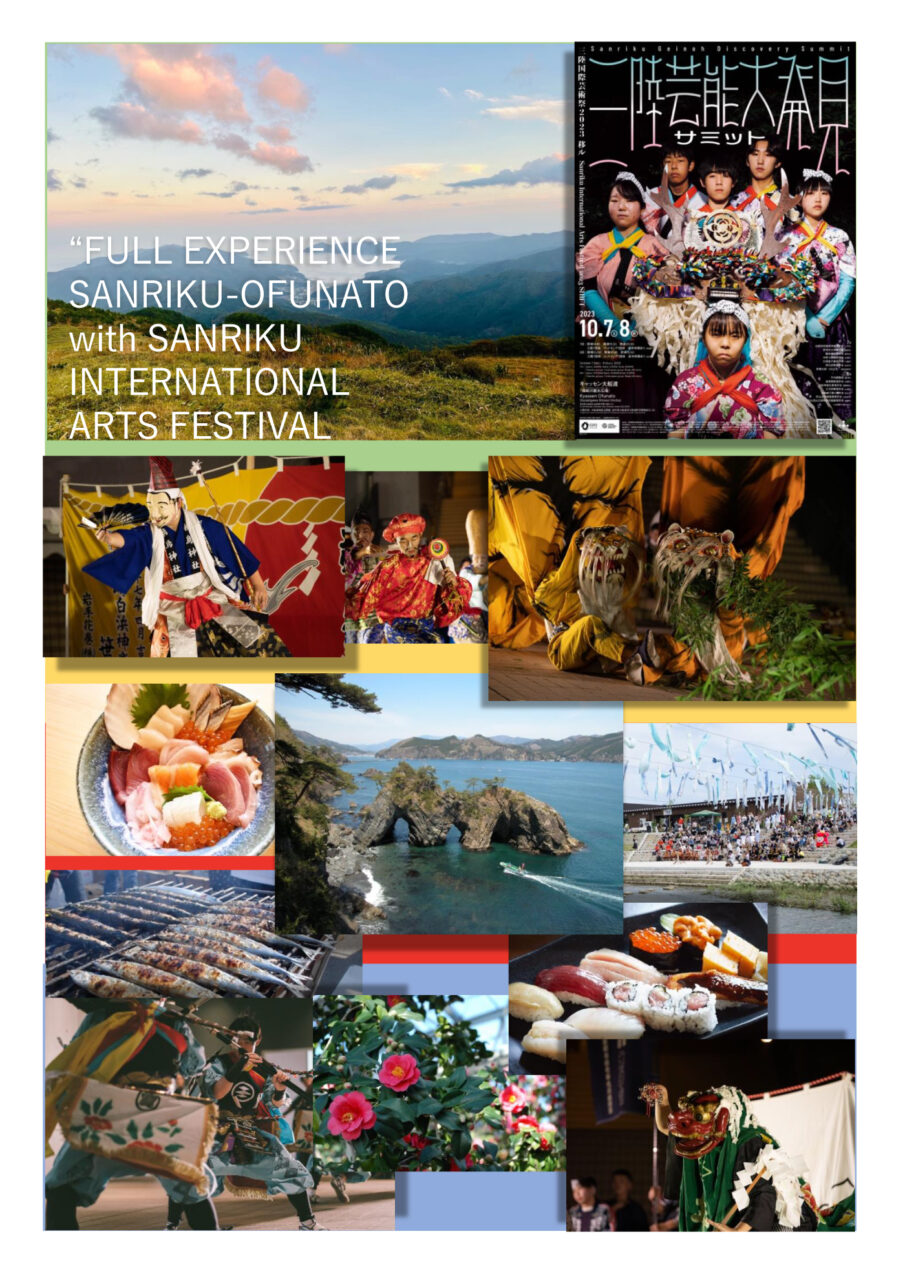
This is a special travel package for “Sanriku International Arts Festival 2023 SHIFT ” and cultural exchange in Iwate Prefecture. Focused on providing an opportunity to watch the Sanriku International Arts Festival and participate in dance activities, this tour allows participants to enjoy the charm of Sanriku and Ofunato through fisheries experience and interactions with locals.
About Sanriku International Arts Festival
The core objective of the Sanriku International Arts Festival,held every year since 2014,is to promote the appeal of Folk Performing Arts —Geinoh–.These arts have been passed down for generations and having taken root among the people,are actively performed in the region.Many groups and individuals participated in the festival’s programs,which included exchange through Geinoh with various Asian countries and the hybridization of Geinoh with contemporary arts.
The committee woks toward a creative recovery from the earthquake disaster through arts and culture and through exchanges among diverse cultures,connecting Sanriku’s Geinoh with the world in the framework of an international arts festival.
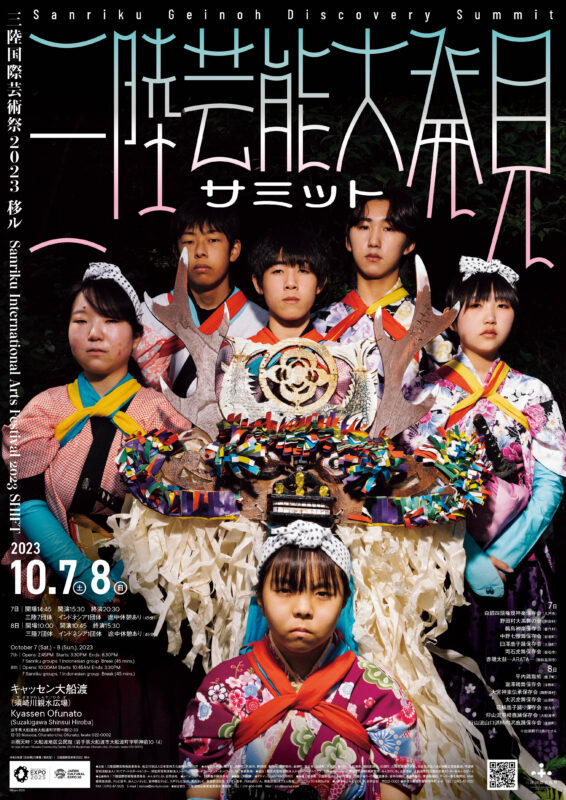
Day 1 (Sat. Oct. 7)
Sendai-Ofunato
Meet us at Sendai Station
===Moving to Ofunato by Chartered Bus
〇 Sanriku International Arts Festival performance (reserved seat)
〇 Participate in dance activity
? meal tickets or app points available for dining at participating local restaurants upon arrival
===Moving to Sanrikucho by chartered taxi
⌂Arrive at a guest house-style inn in Sanriku Town
Day 2 (Sun. Oct. 8)
Ofunato and Rikuzen-takata
? Japanese style Breakfast at accommodation
Dapart accomodation by chartered taxi to the nearest station
=== Sanriku Rail way experience to Sakari
〇 Explore the local town around Sakari Station
=== BRT (Bus) to Ofunato station
○ Ofunato City Industrial Festival(enjoy local and shop booth)
〇 Sanriku International Arts Festival performance(reserved seat)
? Lunch at Kyassen Ofunato shopping mall ( meal tickets or app points available)
=== Moving to Rikuzen Takata by chartered bus
○ SANRIKU FIREWORKS COMPETITION 2023 (reserved seat)
? Dinner: At the venue’s food corner (individually)
===Moving to Sanrikucho by chartered Taxi
⌂ Arrive at a guest house-style inn in Sanriku Town
Day 3 (Mon. National Holiday, Oct. 9)
Ofunato
? Japanese style Breakfast at accommodation
○ Koishihama Mariage Cruise~Enjoy exquisite scallops and underwater strage wine while enjoying the pleasant breeze of Sanriku
○ Koishihama station ~making your wish on the wooden plaque, please ring the “Bell of Happiness” on the platform.
=== Sanriku railway to Sanriku station
? Lunch (using meal tickets or app points)
○ Okirai Walking Tour (by walk and chartered taxi)
? Dinner: Sea food BBQ at New Okirai
○ Stargazing tour (by Chartered taxi)
⌂ Arrive at a guest house-style inn in Sanriku Town
Day 4 (Tues. Oct. 10)
Ofunato-sendai
? Japanese style Breakfast at accommodation
===Moving to Goishi coast by Chartered Bus
○Goishi Coast and Sappa Boat Ride experience
○ Fish preparation activity at Fresh Fish shop and making “Kaisen-don”
? Lunch “Your Original Kaisen-don” (prepare your own seafood bowl)
○ Visit Anatoshiiso Rock
===Moving to Sendai station by Chartered Bus
Meet the TOHOKU CULTURE






©️Sanriku International Art Committee
The Tohoku Sanriku coastal area is known as a treasure trove of folk performing arts unparalleled anywhere in the world. It has hundreds of folk performing arts and festivals that continue to be passed down today, including Kagura dances handed down by Shugendo practitioners and others, as well as a diverse range of performances such as Toramai (Tiger Dance), Kenbai (Buddhist Chant Sword Dance), Shishiodori(Deer Dance), and Shichifukujin (Seven Lucky Gods)
The annual Sanriku International Arts Festival began in 2014 after an encounter between artists who visited the Sanriku coastal area following the Great East Japan Earthquake and folk performing arts, to showcase the wonderful folk performing arts of Sanriku to the world. This year, the festival will feature 14 folk performing arts from the Sanriku coastal area and a dance group from Indonesia, offering a special opportunity to enjoy these unique performances.
Meet the people who live with the sea




©︎Ofunato Portal
The venue, Ofunato in Sanriku, is not only rich in folk performing arts but is also a treasure trove of seafood, located at a ria coast where warm and cold currents intersect to create a bountiful fishing ground. The region is particularly known for its saury and its scallop and oyster aquaculture.In addition to providing an opportunity to watch Sanriku’s Geinoh (folk performing arts), this special tour includes various activities related to the sea, such as a chance to enjoy seafood and watch fireworks light up the night sky. This deep local tour will allow you to immerse yourself in a truly unique experience.
Meet the Gifts from the sea




Surrounded on either side by the Sea of Japan and the Pacific Ocean, Tohoku offers a variety of seafood dishes throughout the year. In addition to fresh, simply cooked fish, the wide range of local seafood cuisine and Sushi options are scrumptious! Ofunato is famous not only for its fresh saury, but also as a treasure trove of abundant seafood such as scallops, oysters, and sea squirts. Most meals consist of fresh local seafood specialties. Please enjoy fresh seafood and delicious dishes in Ofunato.
Meet us in Ofunato!
This is a one-of-a-kind tour that the local community of Ofunato proudly recommends, where you can fully enjoy the history, culture, and cuisine brought by the unique geography of the ria coast with all your senses.
Full of Experiences
□ Sanriku Geinoh Discovery Summit
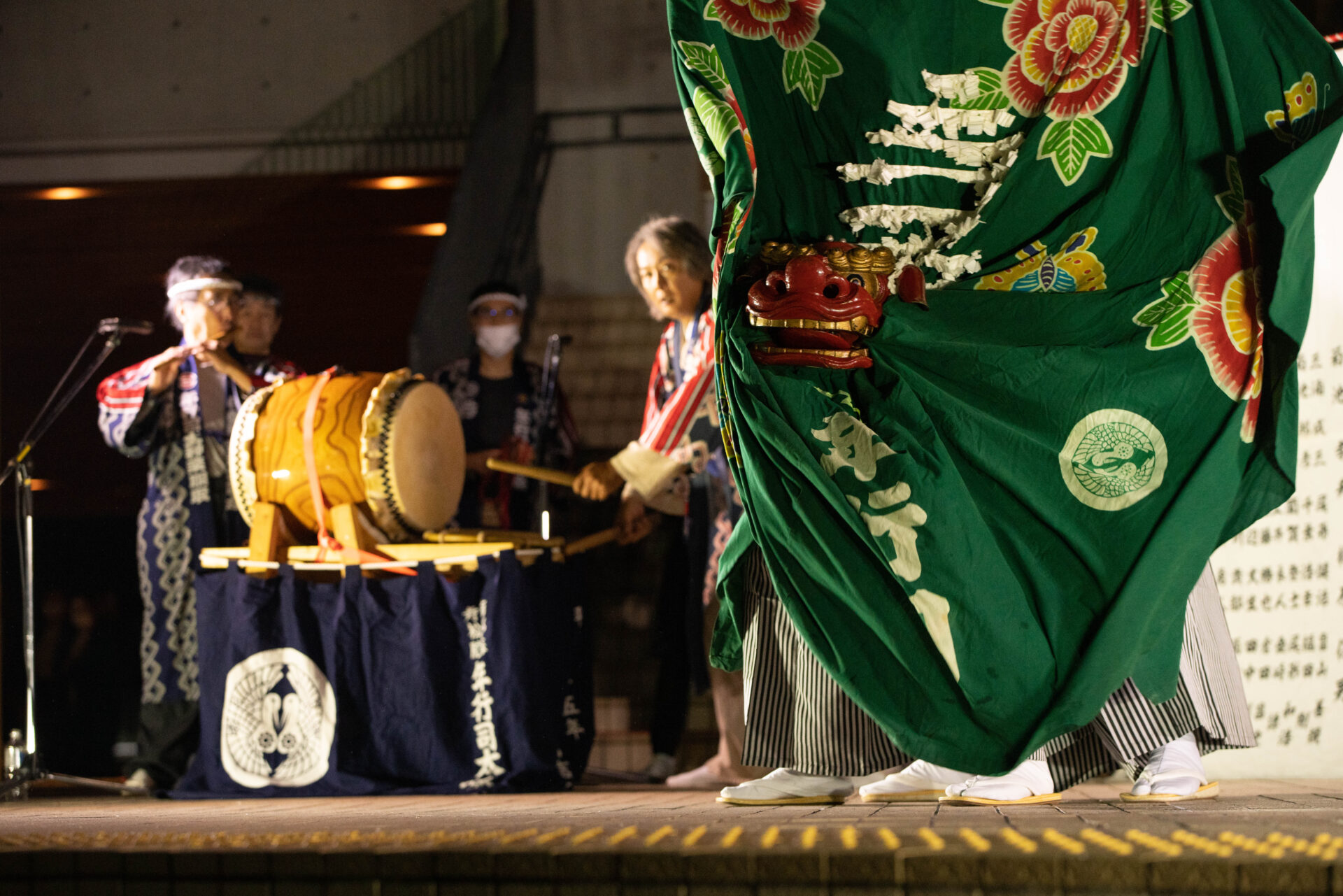
Fourteen performing arts groups from Sanriku will gather in Ofunato!
This year, we are welcoming Miroto Dance Company from Indonesia.
This long-awaited event inviting overseas guests will be the first true “international arts festival” since the COVID-19 pandemic.
On October 7th (Sat.), there will be performing arts by a bonfire, and on October 8th (Sun.), you can enjoy performances and food at the nearby Ofunato Industry Festival.
This 2-day event will provide an opportunity to enjoy vibrant performing arts and food at the same time.
Performers: 14 Sanriku groups, 1 Indonesian group
Folk Performing Arts Event (Performances) October 7 (Sat.) – 8 (Sun.)
7 (Sat.) Opens: 2:45PM Starts: 3:30PM Ends: 8:30PM 7 Sanriku groups, 1 Indonesian group Break (45 mins.)
8 (Sun.) Opens: 10:00AM Starts: 10:45AM Ends: 3:30PM 7 Sanriku groups, 1 Indonesian group Break (45 mins.)
Location: Kyassen Ofunato (Suzakigawa Shinsui Hiroba) In case of rain – Ofunato Community Center
□Exclusive Seats for the SANRIKU FIREWORKS COMPETITION 2023
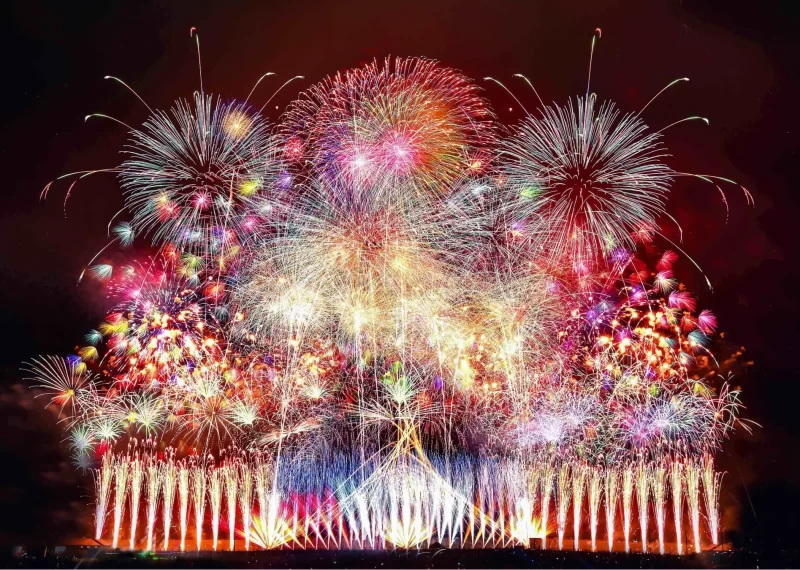
A fireworks viewing plan with transportation to the venue on a charterd bus departing from Kyassen Ofunato.
As the only fireworks competition event along the East Japan Pacific Coast, this event will once again welcome renowned fireworks companies from all over Japan to illuminate Sanriku’s night sky with over 15,000 powerful fireworks, including artistic ones (up to 10 shaku in size). Moreover, they will present the latest Sanriku fireworks in Japan’s greatest synchronized fireworks show, harmonizing with music. Enjoy the fireworks filling the wide skies of Rikuzentakata.
□Ofunato City Industrial Festival




Ofunato is renowned for its saury. Experience the city’s major event featuring seasonal saury dishes, local soul food tents, shops, and food trucks. Local producers and food vendors also participate, providing a unique opportunity for local interactions. The venue, Kyassen Ofunato Area, is a new area that was redeveloped within the city after the Great East Japan Earthquake. It’s a vibrant location with various commercial and public facilities, hotels, supermarkets, and restaurants. You can also purchase locally exclusive sweets and bread at Kamome Terrace, operated by Saito Seika, which is famous for its confectionery products Kamome no Tamago (Seagull’s Egg).
□Koishihama Mariage Cruise



Embark on a cruise around Ryori Bay aboard the fishing boat of actual scallop fishermen, in which you will have the opportunity to visit a scallop aquaculture site and hear stories from the fishermen about how scallops are harvested. The cruise will also provide insights into how the ria coast was formed, along with sightings of capes, osprey nests, and more. After touring the cultivation site (which may vary depending on the season), you’ll enjoy a tasting of fresh scallop sashimi and grilled scallops on board. Additionally, you’ll have the chance to sample French wine that has been aged underwater using cultivation platforms. (In case of unfavorable sea conditions, a similar program will be conducted on land.)
□Okirai Walking Tour

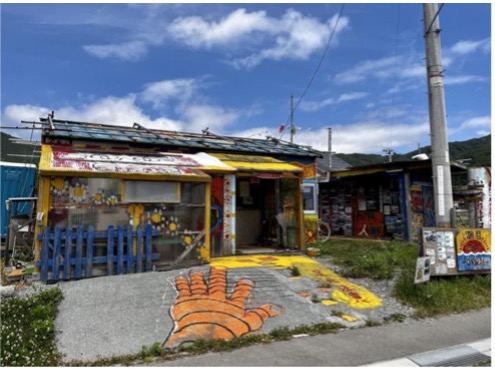
Okirai, the gateway to Sanriku Town, is a small town facing the sea. It boasts numerous natural attractions, including Mt. Natsumushi, which offers a panoramic view of the Pacific Ocean, as well as the tough poplar tree that survived the tsunami aftermath of the Great East Japan Earthquake, ancient trees said to be around 4,000 years old, and the magnificent Daiosugi tree. Additionally, the town has many human-centered attractions stemming from interactions with volunteers who visited following the earthquake, such as the Shiome community-operated private tsunami heritage center and the New Okirai community facility managed by local residents at Sanriku Station. Accompanied by local guides, you will explore Okirai’s highlights, including a visit to a strawberry greenhouse and other noteworthy spots in the area.
□Goishi Coast and Sappa Boat Cruise
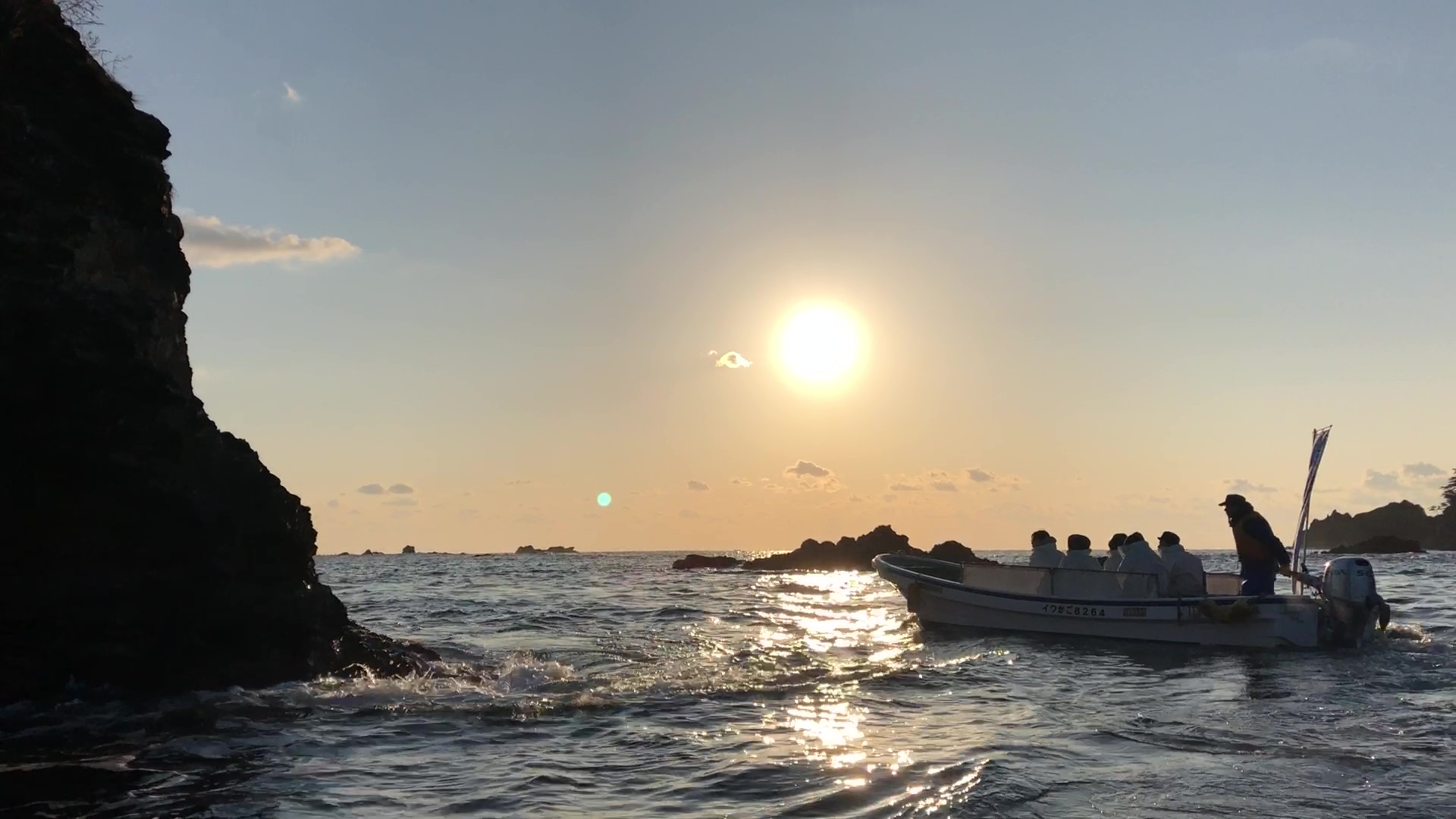
This is a cruise that allows you to fully enjoy the breathtaking views of the Goishi Coast, a highlight of the Sanriku Geopark that Ofunato takes pride in, from the sea. Approximately a 40-minute cruise, you will ride on a small fishing boat called a Sappa Boat through the beautiful seas of Sanriku and Ofunato. The Sappa Boat is a small coastal boat commonly used by fishermen in the Sanriku region for activities such as harvesting seaweed, sea urchins, and abalones. Thanks to its compact size, it’s more maneuverable than larger fishing vessels, allowing it to get closer to rocky areas and cliffs. There’s a local legend that passing through the famous Anatoshiiso rock brings good fortune as well.
Enjoy a thrilling ride and the scenic beauty of the Sanriku coastline to the fullest. (In case of unfavorable weather conditions, an alternative program will be prepared.
□Fish preparation activity taught by a fishmonger


©︎Ofunato Portal
Located near the Kadonohama Beach fishing port, close to the Goishi Coast, is Fresh Fish Shitabo. The owner’s shop and home were damaged in the East Japan Earthquake, but after living in temporary housing, he relocated to higher ground where he currently operates a new establishment. The skilled fishmonger, who is an expert at selecting fish, and his cooking-savvy wife will teach you how to clean and prepare fresh local fish sourced from the market. You will be able to enjoy the fish you prepare on the spot in an original seafood bowl.
□Fresh seafood BBQ

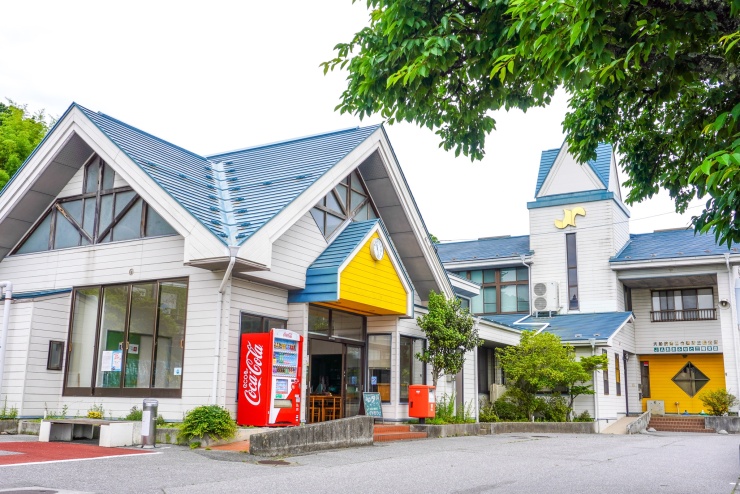
Ofunato is famous not only for its fresh saury, but also as a treasure trove of abundant seafood such as scallops, oysters, and sea squirts. You will enjoy a barbecue feast of fresh seafood caught by local fishermen at New Okirai, a community facility recently opened in May. Originally used as a station building, the venue has been developed into a spot for Michinoku Coast hikers and local residents to stop by and relax.
■Notes__Tour Participation Requirements
*Please note that the order and content of the tour may change depending on the weather and transportation conditions.
Please participate upon reviewing the following information.
・During the tour, you will be accompanied by a Japanese-speaking guide (English assistance available), but the guide will not be present during transportation, meals, accommodation, free time, etc. If you are concerned about your ability to understand or follow the instructions given by the Japanese-speaking guide, you may want to bring an interpreter.
・Some locations on the tour are not accessible for individuals with disabilities. Many places also cannot accommodate the use of assistance animals (such as guide dogs) or medical equipment (crutches, wheelchairs). Regardless of disability status, if you have trouble walking independently or are concerned about your ability to understand or follow the guide’s instructions on your own, you may want to bring an assisting companion.
・If bringing an interpreter, we request that you have one interpreter per five participants. If bringing an assisting companion, we request that the number of companions matches the number of participants needing assistance.
・Our organizers will not arrange for interpreters or companions.
・Please arrange your own tickets and transportation to the departure point at Sendai Station East Exit Tour Bus Stop. If you are late for the meeting time, please make your own way to the venue in Ofunato.
・Most meals consist of fresh local seafood specialties. Depending on the activity, it might not be possible to accommodate substitutions for meat, vegetarian, or vegan preferences. For more details, please feel free to inquire.
・For the implementation of the tour, personal information of all participants (name, address, domestic contact information, date of birth, email address) is required. Additionally, a copy of your passport is necessary for accommodation reservations.
・The organizer reserves the right to refuse participation in any other cases in which participation is deemed difficult. (Intoxication, fever or illness, disruptive behavior, non-compliance with instructions, etc.)
■Handling of Bad Weather
・Some activities included in this tour may not be possible in unfavorable weather conditions. With your safety as a top priority, we have established certain criteria for implementation. Depending on weather and environmental conditions, activities may be moved indoors or replaced with alternative activities.
・Regarding the Sanriku International Arts Festival programs, in the event of rainy weather, an alternate venue will be arranged, and the organizers will provide free transportation.
■Cancellation Policy
・In the event that you cancel due to personal reasons, cancellation fees will be applied as follows: Free of charge up to 11 days before the tour, 20% of the tour fee for cancellations 10 days prior, 30% for cancellations 7 days prior, 40% for cancellations the day before, 50% for cancellations before the start time on the day of the tour, and 100% for cancellations on the day of the tour without prior notice.
・In the case of same-day disaster information, lightning alerts, or weather warnings being issued, there is a possibility of cancellation regardless of weather conditions. In such cases, refunds for cancellation will not be provided.
・In the event of the tour being canceled, the decision will generally be made by 18:00 the day before, and we will notify you via the email or phone number provided during registration. If you are not contacted, the tour will proceed as scheduled, so please ensure you come to the meeting point with your belongings.
・In the case of partial program cancellations due to personal reasons, refunds will not be provided even if the cancellation is made in advance.
・Programs may be canceled without notice in cases when customers or guides experience health issues or other difficulties.
■Regarding Payment
・Please pay the participation fee via bank transfer after applying. If you wish to pay by cash, credit card, or PayPay, please inquire separately (we will provide individual assistance).
■How to Apply: Please access the relevant tour on our website below or apply by phone or fax. (English support available)
Phone: +81(0)192-27-1114 FAX: +81(0)192-27-2231
SANRIKU TOURS https://sanrikutours.com/
Held by: Iwate Kaihatsu Sangyo Co., Ltd. Sanriku Tours
8-19 Machi, Sakari-cho, Ofunato, Iwate
Phone: +81(0)192-27-1114 FAX: +81(0)192-27-2231
Details
| Tour title | ”FULL EXPERIENCE of SANRIKU-OFUNATO with SANRIKU INTERNATIONAL ARTS FESTIVAL” |
| Destination | Ofunato City,Iwate |
| Date | October 7, 2023 (Sat.) to October 10, 2023 (Mon. [National Holiday]) |
| Pricing | 170,000 yen (Including tax) |
| Meeting Place/Time | Sendai Station East Exit Tourist and Shuttle Bus Stop/ Oct.7 11:30 (Tokyo 9:36 = Connect in Sendai at 11:06) |
| Included in the Price | □Accommodation (single occupancy room with breakfast for 3 nights), lunch (day 4), dinner (day 3) □meal tickets or app points available for dining or shopping at participating local restaurants and shops upon arrival ¥10,000 □round-trip bus between Sendai Station and Ofunato City (charter) □transportation between venues and accommodations (by taxi) □activity fees □insurance fee □escort fees □English speaking guide(daytime) □travel agency handling fee |
| Facilities/Transportation Used | Bus (Goishi Kanko), Local Taxi Companies (Sanko Taxi, etc.), Iza Ofunato, Sanriku International Arts Festival Venues, Goishi Coast, Goishi Coast Sappa Boat, Fresh Fish Shitabo, New Okirai, Kyassen Ofunato |
| Min. No. of Registrants | 2 |
| Min. No. of participants | 10 |
| No.of applicants | 20 |
| Closing Date | 7 days prior |
| Required Info for Reservation | Meals: Meals except for those marked with a ○ symbol are free choice. ◉ indicates you can use app points or coupon vouchers valid at Kyassen or participating local establishments. Day 1: Lunch × Dinner◉ Day 2: Breakfast○ Lunch◉ Dinner× Day 3: Breakfast○ Lunch◉ Dinner○ Day 4: Breakfast○ Lunch○ |
| Cancellation Fee | If you cancel your trip due to personal circumstances, cancellation fees based on accommodation regulations will be applied. Counting from the day before the start of the trip the following will be charged: 21 days before departure (free), 20 days before (20% of the travel cost), 7 days before (30% of the travel cost), the day before (40% of the travel cost), the day of departure (50% of the travel cost), after the trip has started (100% of the travel cost) *after 4:00 PM on the day of departure. |
| Planning and Hosting Company | Iwate Kaihatsu Sangyo Co., Ltd. Sanriku Tours Phone: +81(0)192-27-1114 FAX: +81(0)192-27-2231 |
| Meals | Meals except for those marked with a ○ symbol are free choice. ◉ indicates you can use app points or coupon vouchers valid at Kyassen or participating local establishments. Day 1: Lunch × Dinner◉ Day 2: Breakfast○ Lunch◉ Dinner× Day 3: Breakfast○ Lunch◉ Dinner○ Day 4: Breakfast○ Lunch○ |
| Accommodation | You will stay at a guest house-style inn in Sanriku Town. (Single occupancy room; twin rooms available upon request) Facilities: Futon bedding (Tatami-type/bed-type also available), Bath, Toilet (Western-style) *Shared facility Washroom (Shared), Dining area, Beverage vending machines Amenities: Towels (bath, hand), Shampoo, Conditioner, Body wash, Hairdryer, Refrigerator Please Bring: Personal amenities (toothbrush, razor, facial soap, etc.) |
| Inquiries | Iwate Kaihatsu Sangyo Co., Ltd. Sanriku Tours; Contact Persons: Nakamura Phone: +81(0)192-27-1114 FAX: +81(0)192-27-2231 |
| Contact Point for Reservations | Contact Point for Reservations Sanriku International Art Committee Office Mail: info@sanfes.com |
Areas
Artists
-
Shirogane-Shitogongen Kagura Preservation Society
The Shirogane-shitogongen Kagura is originated from the Shirogane district in Hachinohe, a port town. The dance comes with a lion head props called “Gongen-sama”. It is one of the Yamabushi-style kagura with theatrical performances aiming to drive away the evil powers, celebrate big catches, great harvests, and worship gods. The precious, historic lion head was passed down to Hachinohe city in 1758 and now, the dance includes as many as 20 difference performances. During the Spring Prayer (generally held for a number of days since the New Year’s Day every year, residents in the Shirogane district usually put out decorations at their entryway and on July 6th and 7th, more than 10 performances are dedicated as the annual festival at Mishima Shrine, the guardian of the entire district.
-
Hiranai Keibai Group
Keimai, a dance with headdress imitating chicken’s head, is considered as a form of nenbutsu odori in connection with the cult of chicken as exorcist, transmitted from Kesen region belonging to Sendai domain in Ansei era (1854-1859).
The items of the Hiranai Keimai are comprised of haka nenbutsu (prayer in front of tomb), butsudan nenbutsu (prayer in front of Buddhist altar) and niwaodori (garden dance). The latter keeps nine pieces as its repertory in their original form. -
Takisawa keimai Preservation Society
Takisawa Keimai is a local performing art from the Takisawa district of Taneichi in Hirono Town, and is said to have been handed down during the Ansei era (1854-1860). While it is closely related to Kenbai, a type of elegant nenbutsu dance that can be observed throughout almost the entire Iwate Prefecture, it is also influenced by Yamabushi Kagura, as seen in the costumes such as the bird-shaped helmets and the verses of the grave nenbutsu.
The dancers form a circle around a willow (flower) and perform more than 20 different dances to the accompaniment of musical instruments. -
Noda Village Daikokumai Dance Society
“Daikokumai” is a traditional dance to bring luck in. “It is a traditional dance of “Koshogatu” (first full moon festival) performed in 2022’s “Noda Festival” (the biggest event of Noda Village) and the 5th “Sanriku Coast Local Performing Arts Performance” in 2022 for the first time in three years.
-
Unotori Kagura Preservation Society
The Unotori Kagura is a typical yamabushi (mountain hermit) kagura. It worships shishigashira into which the spirit from Unotori Shrine in Torii, Fudai village entered. It tours villages to pray for a rich haul, a bountiful crop and safety of family from January to March every year. The tour proceeds in Iwate, northbound to Kuji city and southbound to Kamaishi city in alternating years. Local residents host the kagura intimately calling “Unotori sama.” Since this form of the tour is unique and it maintains rare customs, Unotori Kagura is designated as the Intangible Folk Cultural Property by the state in 2015.
-
Omiya Kagura Preservation Society
The Omiya Kagura is a yamabushi kagura brought by Eifuku-in, a yamabushi belonging to Haguro school and an administrator of Omiya Shrine at that time, in 1337. With the shishigashira which is given the spirit from Omiya Shrine in Raga, Tanohata village, the kagura is the dance of prayer for well-being, such as warding off evil spirits, fire safety, sound health, security of family, bountiful harvest, rich haul or good business. The characteristic of this kagura is in its vigorous and dynamic way of dancing in the triple meter.
-
Nakano Nanazumai Preservation Society
Nakano Nanazumai is a folk performance art handed down in the Omoto Nakano district of Iwaizumi Town. It is said to have origins dating back to the 1840’s , when Kitaro Kudo, who was called Kagura Tayu ”Master of Kagura Sacred Dance” at the time, created it by using the beginning portion of a kagura dance as its basic inspiration. The performers include 7 pairs of dancers doing 7 different dance segments that are named Dogu-tori, Yoko-hane, Chirashi, Tatakai, Tsuttōtsu, Sansoku “Torii-gakari”, and Dogu-osame. At the time, these were performed as kagura sacred dances, but as times changed, they became integrated into the village festival. Nakano Nanazumai is a gallant and lively dance entreating an abundant harvest, big catches in the sea and the general safety of the village. The strong and graceful dance imagines the hard work of preparing new fields, then raising precious crops, and finally thankfully celebrating that year’s harvest all together with fellow villagers.
-
Hanawa Shishiodori Preservation Society
Hei Yorimoto, who had made his home at Nejo Castle, had a vassal called Hanawa Jiro who was a performing arts enthusiast. This Hanawa is said to have learned this dance while traveling around in Echigo. In 1631, he accompanied Nanbu Shigenobu – the twenty-ninth head of the Nanbu clan, affectionately known as “Hanawa Tonosama” (Lord Hanawa) – when the latter was summoned to Morioka from Hanawa. He performed the dance at Morioka Castle, and was granted the use of the Nanbu clan’s kuyo (nine-star) and mukaizuru (facing cranes) crests.
Every year, the dance is dedicated to the gods at Hanamori Shrine’s annual festival in April, and is performed on August 15 during the Bon Festival at the Hanawa Tradition Museum, to pray for the souls of ancestors. -
Osawa Toramai Preservation Society
It is said that in the Edo period, sailors learned the toramai in Edo or Nagasaki, and passed it on when they returned to their hometowns.
-
Usuzawa Shishiodori Preservation Society
Allegedly there used to be a form of dance which had been conveyed by a sailor from Boshu (the tip of Boso peninsula, current Chiba prefecture) during the Genroku era (1688-1704). Today’s Usuzawa Shishiodori is said to have originated from the dance in Boshu which the villagers of Otsuchi learned during their travel to the Kashima Shrine in the Tenmei era (1781-1789). Today, they dedicate the dance at Otsuchi Festival of the Kozuchi Shrine and join the procession of mikoshi (a portable shrine) as its advance unit, dedicating the dance at stations of mikoshi and visiting houses for ritual. The dance is also dedicated at the festival of a branch shrine of the Kozuchi Shrine in Usuzawa community. Although the number of households in Usuzawa community is limited, all of them are contributing to the Preservation Society. It includes some members visiting from other communities. The dance is intense and wild with swinging hair-like ribbons called kan’nagara, made of shaved Japanese wood pulp.
-
Ryoishi Toramai Preservation Society
Ryoishi Toramai is said to have originated in the mid-Edo period as a prayer for a safe voyage and bountiful catch. Although the entire region suffered significant damage from multiple tsunamis and many valuable records were lost, the dance form has been passed down without alteration to this day.
It is primarily performed during the Ryoishi Festival (regularly held at Itsukushima Shrine) and other events in Ryoishi Town.
The distinctive features of Ryoishi Toramai include the movements of the tiger head, footwork, and the interchange of dancers during the performance. The accompanying music, such as the sounds of the taiko drums, the tones of the clear flute, and hand cymbals along with shouts (“dome”) harmonize with the dancers as they vigorously swing the tiger heads, while their footwork resembles the stomping of sumo wrestlers. -
Gyozanryu Sasazaki Shishiodori Preservation Society
In 1768, a man named Risota returned home from Shizugawa village (today,Minamisanriku Town,Motoyoshi District,Miyagi Prefecture) in Motoyoshi district, bearing a scroll certifying him as the inheritor of this dance. He was later adopted by the Osorei family in Sasazaki, Ofunato, and introduced the dance to the district. The chief of the Date clan praised the dance and granted Risota the akakuyo (red nine-star) crest of a fief-holder, the epithet of “gyozan,” (which means “rare,” “extraordinary”) and the frontal cloth with bird feathers. This is the precious ancestral heritage.
-
Akaiso Taiko -ARATA-
Formed in 1991 to promote the spread of traditional Japanese taiko drums, this group from Tomari, Hirota Town, consisting mostly of young members, has performed numerous times at the local Kurosaki Shrine festival.
In 2015, at the first festival following earthquake, they released new musical pieces and expanded their performances to various events and visits to elderly care facilities. Since 2017, they have been active under the new name Akaiso Taiko – ARATA – with the intention of revitalizing Rikuzentakata.
Currently, they diligently practice every day, putting their souls into each beat and energetically performing in various places to touch the hearts of audiences. -
Gyozan-ryu Yamaguchi-ha Kakinaizawa Shishiodori Preservation Society
It is said that this group began when Kazo, from the Kakinaizawa district’s Noboto residence, inherited the folk performing art form from Magoshi of Yahagi Village (current Yahagi of Rikuzentakata City) in the beginning of the Bunsei era in 1789.
Kazo lost his wife at a young age, leaving behind their beloved child and a horse. He was at loss, but sold his horse and went to Yahagi Village to learn shishi-odori. He was then initiated into the art form, and returned home to dance in front of his wife’s spirit.
Belonging to the Gyozan school Yamaguchi style, this folk performing art form has been handed down within their town since the middle of the feudal affairs, as a dance with energetic and heroic movements.
Contact
Iwate Kaihatsu Sangyo Co., Ltd. Sanriku Tours
8-19 Machi, Sakari-cho, Ofunato, Iwate
Phone: +81(0)192-27-1114 FAX: +81(0)192-27-2231
Tour Coordinator: Sumiyo Nakamura
Sanriku International Arts Festival 2023
-JAPAN CULTURAL EXPO 2.0
Organized by|Sanriku International Arts Committee, Japan Arts Council, and Agency for Cultural Affairs, Government of Japan

Co-organized by|Hachinohe City, Hashikami Town, Hirono Town, Kuji City, Noda Village, Fudai Village, Tanohata Village, Iwaizumi Town, Miyako City, Yamada Town, Otsuchi Town, Kamaishi City, Ofunato City, Rikuzentakata City, Sumita Town, Sanriku Railway Co., Ltd., Japan Folk Performing Arts Association, NPO Iwate Arts Support Center, and NPO Japan Contemporary Dance Network
Cooperated by|NPO Michinoku Trail Club, imajimu LLC, Tohoku Cultural Property Video Research Institute, Minna no Shirushi LLC